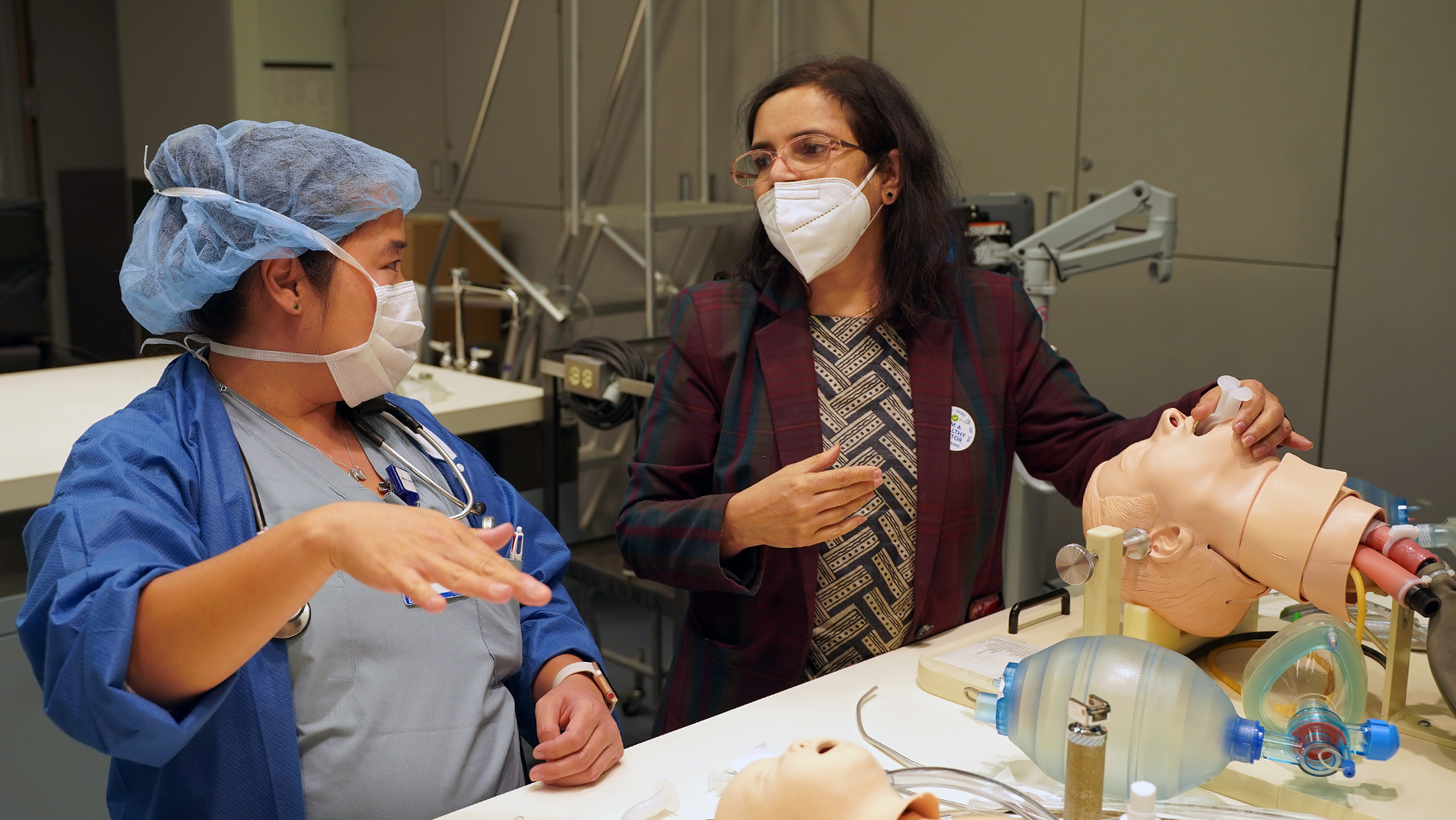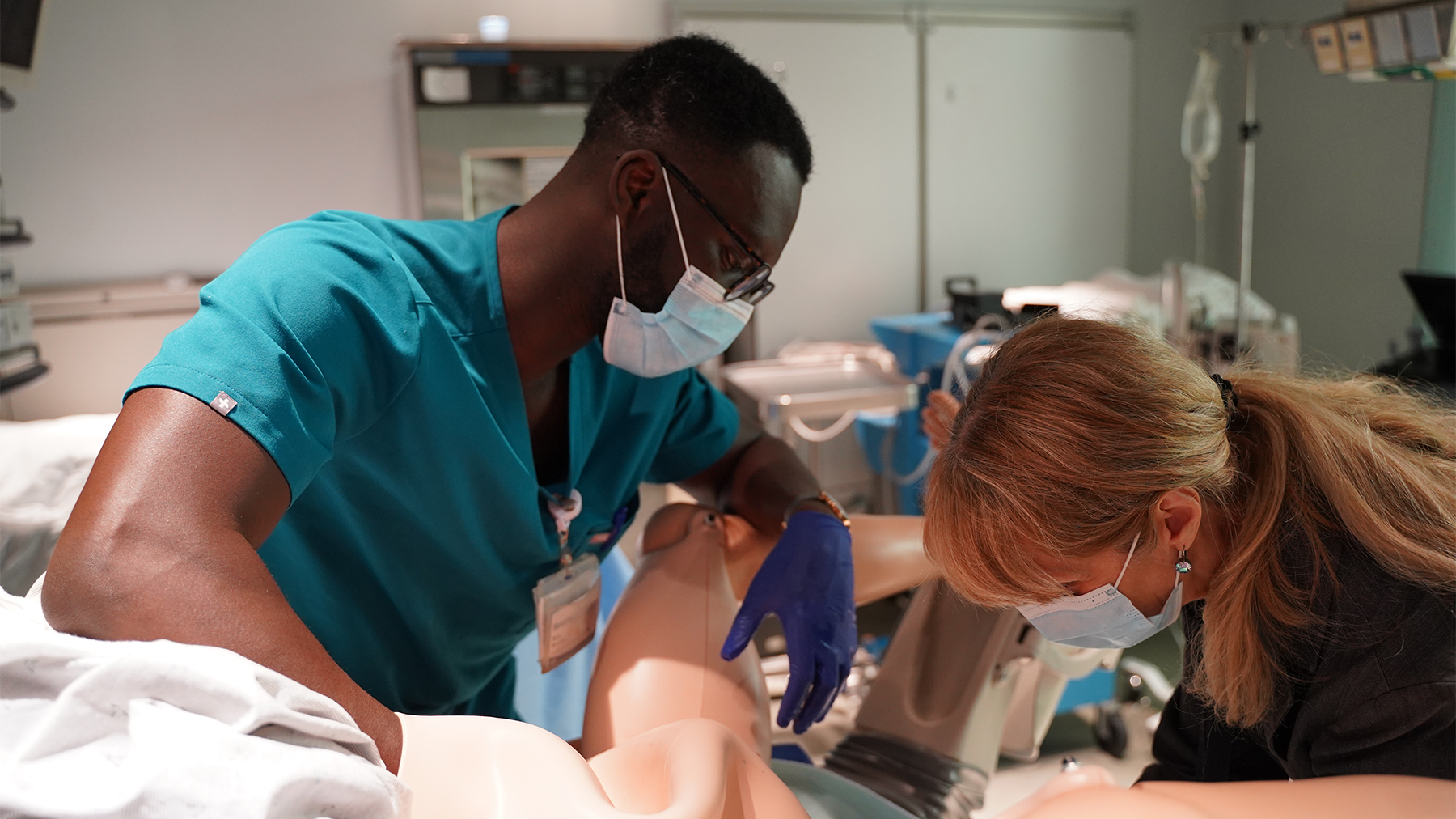
The 11th Annual William Davidson Medical Education Week at OUWB is underway and kicked off Monday with several sessions, including a tour of the Marcia & Eugene Applebaum Simulation Learning Institute.
The session is one of nearly 30 scheduled throughout the week with hundreds of people expected to attend either virtually or in person. (To view a full schedule and/or register for sessions, click here.)
Other sessions include the William Davidson Lecture featuring Duane Mezwa, M.D., Stephan Sharf Dean, OUWB, (7:30 a.m., Wednesday), and a day (Thursday) dedicated entirely to research.
Including a hands-on tour of the Applebaum Simulation Learning Institute (SLI) at Beaumont Hospital, Royal Oak, on the first day of medical education week, makes sense, said Kathryn Ziegler, M.D., executive director. Ziegler is also an assistant professor in the Department of Surgery.
“We need to address the gap in the awareness of the resources available to preclinical and clinical faculty at the Applebaum Simulation Learning Institute,” she said. “We (also) aim to foster an increased interest in simulation education, increase exposure to multiple clinical disciplines, and increase interdisciplinary simulation, which improves communication, reduces errors, and improves patient outcomes.”
 |
| Beaumont resident Kojo Asantey (OUWB, '20) led a training session on delivering a baby through use of one of the SLI's training mannequins. |
Ziegler also noted that SLI officials hope to strengthen the relationship between OUWB and the lab by encouraging multi-disciplinary simulation, and creating a hub for simulation-based educational activities.
The SLI is accredited as a Level 1 Comprehensive Education Institute from the American College of Surgeons (ACS). A Level 1 accreditation is the highest level of accreditation, and as of today the SLI is one of 19 ACS-AEI (Accredited Education Institutes) accredited fellowship programs.
As part of the 2022 Medical Education Week session, SLI featured four stations, each with a different type of simulation.
The “sim man” station featured a training mannequin programmed to present shortness of breath. Attendees had to assess the patient based on information provided and the programmed actions of the training mannequin.
At the orthopaedic surgery station, it was demonstrated how to put in metal rods with screws onto a forearm bone. A third station was focused on proper technique for insertion of breathing tubes. The last station featured OB-GYN-related treatments.
Varna Taranikanti, Ph.D., associate professor, Department of Foundational Medical Studies, was among those who toured SLI.
“I want to know more about how we can incorporate (the SLI) into the preclinical education,” she says. “How we can utilize (the SLI) … is incredible.”
Surgical Simulation Fellowship
The session also included discussion about the surgical simulation fellowship started and led by Nathan Novotny, M.D., assistant professor, Departments of Surgery and Pediatrics, and Ngan Nguyen, Ph.D., assistant professor in the Department of Foundational Medical Studies and Department of Surgery.
| More from OUWB |
Research projects by OUWB Class of 2022 featured in Embark Capstone Colloquium |
The program is only the 20th in the U.S. to be accredited by ACS-AEI. The fellowship experience is tailored to the individual fellow, and the core curriculum is completed over one year of study.
The team already is preparing for its second fellow.
Nguyen and Novotny feel it is important to talk about the fellowship to as many people as possible.
“It’s important for further underscoring our safe care and it highlights the emphasis on simulation,” Novotny said. “We practice here first and then bring our A-game to the field.”
“We want people to know that the fellowship is well-structured and accredited,” Nguyen added.
More information about the fellowship can be found here.
To request an interview, visit the OUWB Communications & Marketing webpage.
NOTICE: Except where otherwise noted, all articles are published under a Creative Commons Attribution 3.0 license. You are free to copy, distribute, adapt, transmit, or make commercial use of this work as long as you attribute Oakland University William Beaumont School of Medicine as the original creator and include a link to this article.

